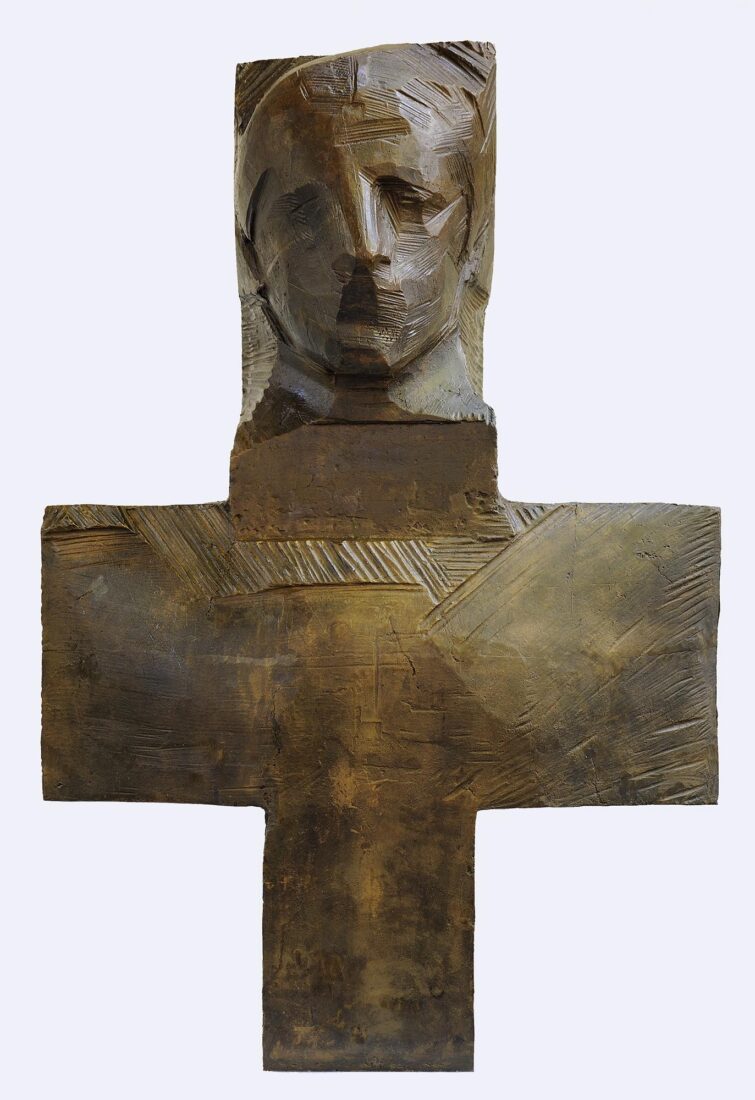We use cookies to make our site work properly, to personalize content and ads, to provide social media features and to analyze our traffic. We also share information about how you use our site with our social media, advertising and analytics partners. Read the Cookies Policy.

Kalamaras Dimitris (1924 - 1997)
Head of Alexander the Great, 1958 - 1993
Bronze, 103,5 x 71 x 45 cm
An artist faithful to the study of nature and an admirer of the art of the Renaissance, Dimitris Kalamaras always placed the focus of his sculpture on the human figure. Without ever distancing himself completely from representational imagery, he moved towards abstraction, eventually arriving at an architecturalized sculpture based on geometric volumes. This end product was the natural conclusion of his firm belief in order, harmony, symmetry and whatever had its basis in the law of numbers.
The “Head of Alexander the Great” came from a study of an equestrian statue that was to be installed in the northern city of Florina, and was part of a subject that particularly concerned him – that of the “horse and rider.” Kalamaras began researching this theme while still a student in Italy, when he measured and drew the equestrian statues of “Marcus Aurelius”, the “Colleoni“ by Andrea Verocchio and the “Gattamelata” by Donatello. The equestrian statue of Alexander (1958-1993) sums up all his concerns regarding the rendering of forms. It is a static work, imposing and rigidly frontal, built of parallelograms and cubes and based on the archetypal shape of the cross, on symmetry and on precise measurements.

